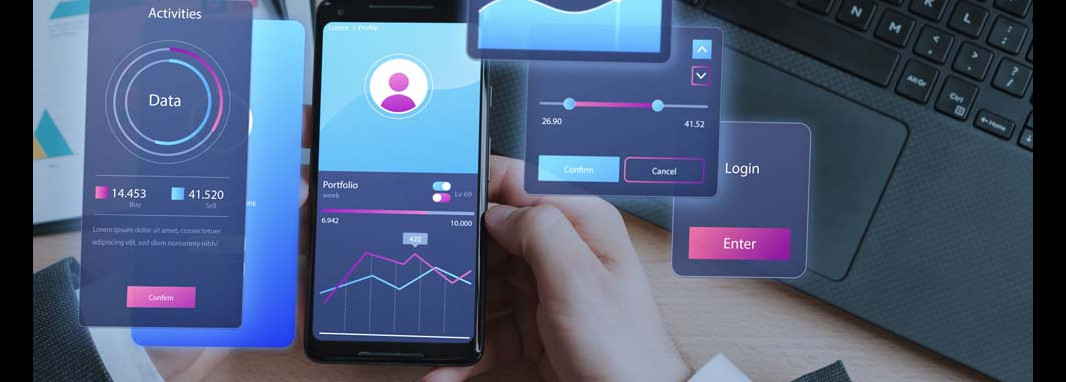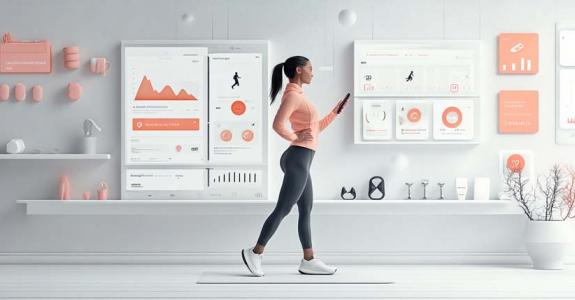Audience, monetization model, and long-term growth.
The type of fitness app you build defines more than just its features — it sets the foundation for your audience, monetization model, and long-term growth.
- Choose wrong, and you risk building something no one needs.
- Choose right, and you gain product–market fit from the start.
This article is for founders, investors, and product managers who want to make clear, data-driven decisions before jumping into development.
What Defines Your Fitness App Type
Before picking a format, ask: what is the core purpose of your app? The type should naturally align with your users’ needs and the value you deliver.
Key factors that shape your app type:
- Product goal — motivation, habit-building, guidance, analytics, support
- Target audience — beginners vs. pros, solo users vs. clients, general public vs. niche
- Primary use case — training, tracking, nutrition, recovery, mindfulness
Workout Apps
Workout apps focus on delivering structured training plans to users — whether they’re at home, at the gym, or on the go.
🎯 Goal:
Help users stay consistent with guided exercise routines tailored to their fitness level and goals.
👥 Ideal audience:
- Independent users without a personal trainer
- People training at home, in the gym, or while traveling
- Beginners looking for direction, or experienced users wanting structure
🔧 Key features:
- Pre-made and customizable workout plans
- Video or animated exercise demonstrations
- Progress tracking and workout history
- Schedule builder and reminders
🔍 Examples:
- Nike Training Club – high-quality video workouts, categorized by goal and duration
- Freeletics – AI-based plans for home or gym, focused on progression and bodyweight training
Nutrition & Diet Apps
Nutrition apps help users track what they eat, understand their habits, and reach goals like weight loss, muscle gain, or healthy living.
🎯 Goal:
Monitor food intake, track progress, and guide better eating decisions.
👥 Ideal audience:
- Users trying to lose weight or bulk up
- Health-conscious individuals maintaining a balanced diet
- People managing conditions (e.g., diabetes, food sensitivities)
🔧 Key features:
- Calorie and macronutrient tracker
- Barcode scanner for packaged foods
- Meal logging and daily summaries
- Recipe suggestions and meal plans
🔍 Examples:
- MyFitnessPal – massive food database, macro tracking, community features
- Lifesum – personalized plans, visual progress, integration with wearables
Activity Tracking Apps
These apps are built to monitor physical activity and daily movement, helping users stay consistent and aware of their health data.
🎯 Goal:
Track real-world activity: steps, distance, calories, and habits — often in real time.
👥 Ideal audience:
- Runners, cyclists, hikers, and walkers
- Users with smartwatches and fitness bands
- People focused on maintaining an active lifestyle
🔧 Key features:
- Step counting, calorie burn, heart rate monitoring
- GPS route tracking for outdoor activities
- Integration with wearables (Apple Watch, Fitbit, Garmin, etc.)
- Daily and weekly activity summaries
🔍 Examples:
- Strava – popular among athletes for running and cycling routes, leaderboards
- Apple Health – tracks multiple health and activity metrics from various sources
Yoga & Meditation Apps
These apps help users relax, recover, and improve mental well-being, often combining physical and mindfulness practices.
🎯 Goal:
Support physical flexibility, reduce stress, and promote healthy routines through calm, guided experiences.
👥 Ideal audience:
- Overworked professionals needing stress relief
- Office workers looking to balance posture and breathing
- Older adults focusing on gentle movement and recovery
🔧 Key features:
- Guided video or audio sessions (yoga, stretching, breathing)
- Soothing background music and nature sounds
- Meditation timers and mood tracking
- Daily reminders and mindfulness streaks
🔍 Examples:
- Calm – meditations, breathing exercises, and sleep sounds
- Headspace – beginner-friendly programs for meditation, focus, and balance
Personal Trainer Apps
These apps are built to connect fitness professionals with their clients, offering tools for remote coaching, progress tracking, and communication.
🎯 Goal:
Enable trainers to deliver personalized programs, monitor results, and stay in touch with clients.
👥 Ideal audience:
- Personal trainers and fitness coaches
- Gyms, fitness studios, wellness centers
- Clients looking for 1-on-1 or semi-personalized guidance
🔧 Key features:
- Custom workout and nutrition plans
- Client progress tracking and performance analytics
- Built-in chat and messaging tools
- Content library with video exercises
- CRM-like tools for managing clients, schedules, and payments
🔍 Examples:
- Trainerize – full suite for online coaching, habit tracking, and video calls
- My PT Hub – all-in-one platform for client management, program building, and engagement
Hybrid and Niche Fitness App Models
Some apps combine multiple categories — others go deep into a single niche. Both strategies can work, depending on your goals and resources.
🧩 Hybrid approach:
- Combines workouts + nutrition + activity tracking
- Offers users a complete health experience in one place
- Often used by lifestyle-focused apps targeting a broad base
Examples:
- 8fit – workouts + meal planning + habit building
- FitOn – social workouts + nutrition + mindfulness
- Jefit – gym-focused with deep tracking and planning tools
🎯 Niche apps:
- Focus on a specific audience or use case
- Easier to stand out, build community, and rank in app stores
- Examples:
- For pregnant women (pre/postnatal fitness)
- For seniors (joint-friendly workouts)
- For kids (gamified movement)
When to build all-in-one vs. niche:
- Choose niche if you want fast validation, low CAC, strong retention
- Go hybrid if you have resources, a wide target audience, or a brand to scale
How to Choose: A Step-by-Step Approach
Choosing the right app type isn’t just about trends — it’s about aligning your product with real demand, real users, and realistic goals.
🔍 Step-by-step process:
- Define the core user need
– What problem are you solving? Motivation, structure, guidance, or accountability?
- Segment your target audience
– Beginners, athletes, parents, seniors, gym users, remote workers?
- Analyze competitors in your niche
– What’s already working? What’s missing? Where can you differentiate?
- Decide on scope
– Will you build a focused tool or a broader platform?
- Outline your MVP
– What’s the smallest valuable version you can launch to validate the idea?
- Test with a real audience
– Use surveys, landing pages, interviews, or prototypes to get early feedback
Conclusion: Your App Type Defines Your Strategy
Success in the fitness app market isn’t about offering every feature — it’s about solving one real need for one clear audience.
The type of app you choose determines everything else: UX, monetization, feature set, and go-to-market.
Choose with intention — and build with focus.
📚 Next reads to go deeper:
- How to Define and Analyze the Target Audience for Your Fitness App
- How to Build a Successful Fitness App: Step-by-Step Guide
- How Much Does It Cost to Develop a Fitness App?
- Must-Have Features for a Fitness App in 2025
- Monetization Strategies for Fitness Apps
📎 Want help choosing the right strategy and building your app?
Talk to our team at Zfort Group — we help you go from idea to product-market fit.






